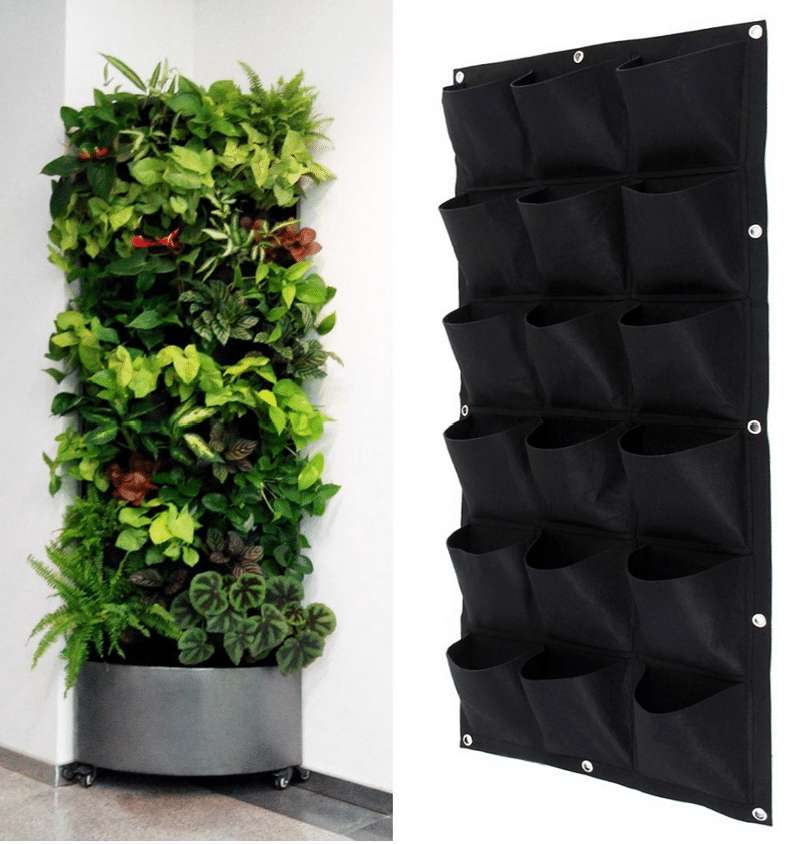
Table of Contents
Benefits Of Vertical Farming at Home
Vertical farming can be a great choice for a variety of reasons! It’s a perfect DIY project for anyone who likes to garden but lives in a house or apartment with no yard, or in an area that isn’t good for growing plants. With the use of grow lights, you can even create a vertical farm in a dark living space. Vertical farming is also a great way to make sure your herbs are fresh and pesticide free. Cooking enthusiasts can harvest a sustainable supply of fresh ingredients, and save extra trips to the grocery store. Much like living walls, DIY vertical gardens can also add aesthetic appeal to your kitchen and let you keep plants without taking up any floor space!Types of DIY vertical farms
If you’re thinking of making your own vertical garden, there are plenty of different directions you can take. Some tutorials recommend a style of garden wall where plants are fitted tightly into a shallow box, which is then turned sideways and hung on a wall. However, this is not an ideal situation for your plants, as the top end may dry out too quickly, leaving the lower end standing in water. The other major option is to use separate containers for each plant, and attach them all to the same frame or wall like. This way, each plant can be watered individually, allowing you to more accurately tailor their care. This method also reduces the risk of water leaks that could damage nearby floors, counters, or furniture. You can also choose whether to make a vertical garden that hangs on a wall, in a window, or stands on the floor. This partially depends on whether you plan to grow your plants in soil or water.How to Make a Vertical Farm
Here are some designs for vertical gardens that you can replicate for your own home, garden, or balcony!
Image Credit: abeautifulmess.com
- This tutorial uses landscaping fabric to create pockets for herbs or other small vegetables. If you want to use this design indoors, you may need to find a way to waterproof it or collect water underneath, as the fabric will leak when you water the plants.

Image Credit: clairepotterdesign.com
- Surprisingly, rain gutters are a very popular material choice for vertical gardens. There are lots of different ways to repurpose them into a stylish and efficient planter system. Here are a few ideas with links to tutorials. This article has indoor, outdoor, hanging, and freestanding gutter gardens that will inspire you to make your own!

Image Credit: thebirdandhersong.com
- This is an easy method for creating an herb garden in a sunny window. The same technique could also be adapted to use different materials if you want to further save on costs by using whatever you have on hand already.
Where to Buy a Vertical Farm

Image Credit: amazingcreation.net
- This vertical stacking planter set has great reviews on Amazon, and would be a good size for indoor or outdoor use. It could even fit on a kitchen counter! Each tier drains excess water into the next one, so you can save effort and water.

Image Credit: Lowes
- If you’re going for a more natural look, this wood garden shelf could be a good option. It takes up about the same footprint as a small bookshelf, but provides seven tiers of growing space, as well as a drip irrigation system. You could also put it outside or on a balcony, if indoor space is hard to come by.

Image Credit: Walmart
- For anyone who liked the pocket plant hanger tutorial above, but isn’t crazy about DIY, this product is basically the same thing. It comes in four sizes ranging from 18 pockets to 72 pockets, in case you’re looking to cover an entire wall. Much like the DIY version, if you want to use this product indoors, you’ll need to place a tray underneath so that excess water doesn’t drain onto your floor.




